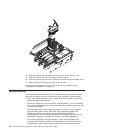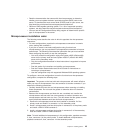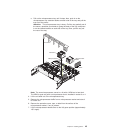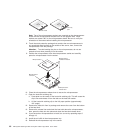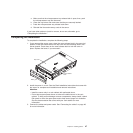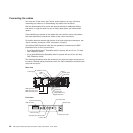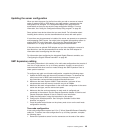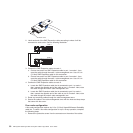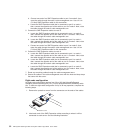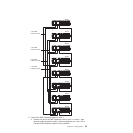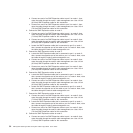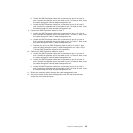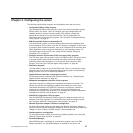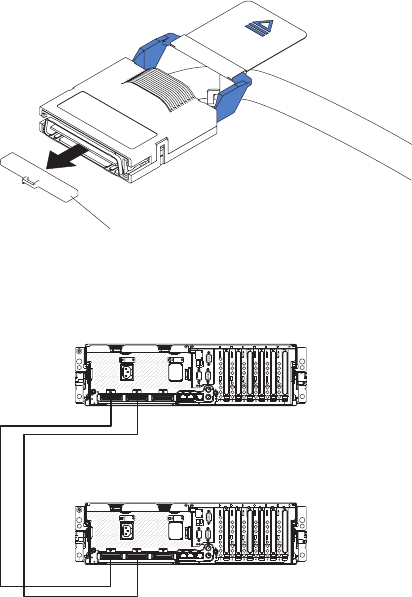
Protective cover
2. Label each end of the SMP Expansion cables according to where it will be
connected to each server. See the following illustration.
Node 2
Node 1
3. Connect the SMP Expansion cables to node 1:
a. Connect one end of an SMP Expansion cable to port 1 on node 1; then,
route the cable through the node 1 cable-management arm. Use a 2.3-m
(7.6-foot) SMP Expansion cable for this connection.
b. Connect one end of an SMP Expansion cable to port 2 on node 1; then,
route the cable through the node 1 cable-management arm. Use a 2.3-m
(7.6-foot) SMP Expansion cable for this connection.
4. Connect the SMP Expansion cables to node 2:
a. Locate the SMP Expansion cable that is connected to port 1 on node 1;
then, connect the opposite end of the cable to port 1 of node 2. Next, route
the cable through the node 2 cable-management arm.
b. Locate the SMP Expansion cable that is connected to port 2 on node 1;
then, connect the opposite end of the cable to port 2 of node 2. Next, route
the cable through the node 2 cable-management arm.
5. Route any remaining cables through the cable-management arms.
6. Secure the cables in the cable-management arms with the hook-and-loop straps
that come with the server.
Four-node configuration
A four-node configuration requires six 2.3-m (7.6-foot) XpandOnDemand Scalability
cable kits. To cable a four-node configuration for up to 16-way operation, complete
the following steps:
1. Remove the protective covers from the connectors on the ends of the cables.
50 IBM System x3950 Type 8878 and System x3950 E Type 8879: User’s Guide



